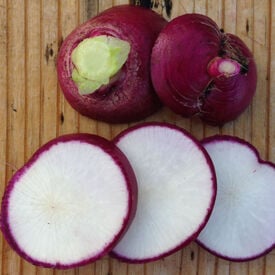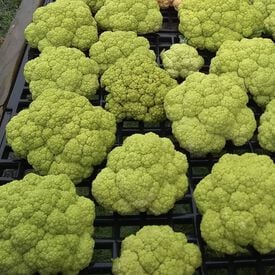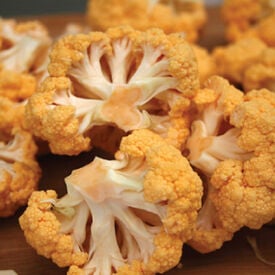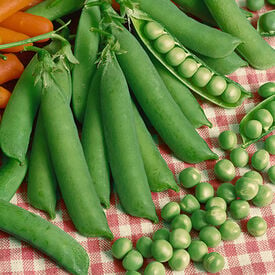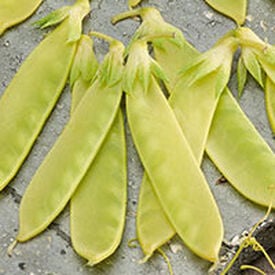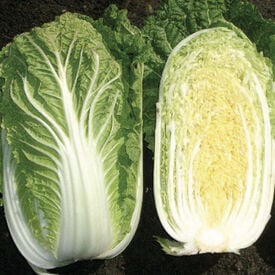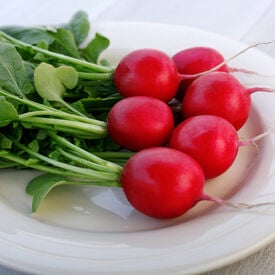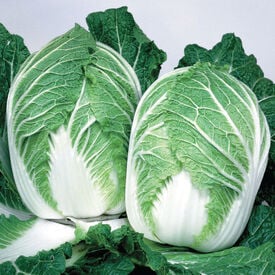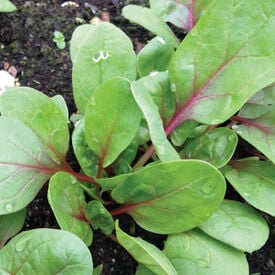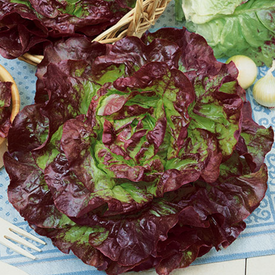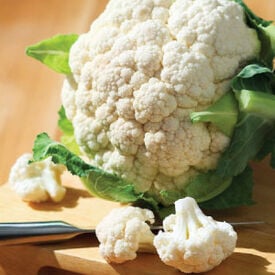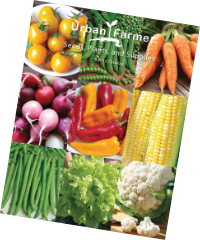The Purple Plum is an amazing purple skinned radish with a crisp, mild and sweet white flesh! This unique radish is different from the "typical" radish coloring. This small round shaped radish is early to harvest, which makes it great for home and market growers. Purple Plum is a nice variety to blend with other colors in mixes!
The Vitaverde cauliflower, or "broccoflower," is the famous cross of broccoli and cauliflower! The Vitaverde broccoflower grows up to 1 pound. This hybrid has a vibrant green head, is heat tolerant and cooks fast with a mild sweet taste.
The Cheddar cauliflower lives up to its name with its awesome cheddar color and great flavor! This cauliflower is a novelty, orange curd that is high in beta-carotene. A mid-size plant, domed head, and is very productive in the fall. Fun to watch grow and eat!
The Progress No. 9 Pea is a very prolific and early yielding shelling pea! This wrinkle-seeded pea is fast growing and produces plump dark green pods. Enjoy 7-9 delicious peas per pod that are perfect for soups or as a side dish. The Progress No. 9 holds well on the vine and is also disease resistant. Certified Organic. Learn more about our organic seeds.
The Golden Sweet Pea is really the gold standard for yellow shelling peas! This yellow pod snow pea grows to be around 3 inches long. This pea has a wonderful sweet taste and can be eaten raw in salads or steamed as a side dish. The large 5-6 foot vines need to be trellised and will grow beautiful purple flowers. Certified Organic. Learn more about our organic seeds.
China Star is a high producing and uniform Chinese cabbage. Grows large heads with a dark green exterior and dark yellow interior. It is slow bolting. China Star performs well in all Chinese cabbage planting slots.
Crunchy Crimson radish is a high yielding root with superior quality and uniformity. These roots have bright red skin with excellent interior quality and are very slow to develop pith. Crunchy Crimson grows well under cool conditions.
China Express is a chinese cabbage that is a widely-adapted and can be grown throughout. This is a very uniform cabbage with tightly wrapped heads. Medium-sized that are fast maturing.
The red veined Red Tabby Spinach has beautiful tender smooth leaves. This variety is an excellent baby leaf spinach that does well in spring, fall and winter. Its uniform, smooth leaves grow straight and upright. Red Tabby is also resistant to downy mildew races 1-13.
Carmona Red is a favorite among many market growers! This lettuce variety produces big, bright red heads with lime green hearts. The Carmona Red has a nice silky texture and is very disease resistance.
Amazing cauliflower seeds produce a high-yielding, uniform variety known for its large, dense, and smooth white heads. This hybrid cauliflower is prized for its excellent resistance to common diseases and its ability to perform well in a range of growing conditions, from cool climates to slightly warmer environments. With a fast-growing cycle, Amazing cauliflower is ideal for early-season harvests, making it popular among commercial growers and home gardeners alike. The compact, tightly-formed heads are highly marketable and have a delicate, mild flavor that holds up well in both fresh and cooked dishes. Whether grown for local markets or personal use, Amazing cauliflower seeds offer consistent, premium-quality results with minimal care required.
Spring Raab broccoli, also known as rapini, has roots in Mediterranean cuisine, particularly in Italy, where it has been cultivated for centuries. This unique vegetable is characterized by its slender, green stalks topped with small yellow flowers and dark green leaves, which are edible and packed with nutrients. The flavor of Spring Raab is distinctively bitter and nutty, which softens with cooking, making it a versatile addition to dishes like stir-fries and pasta. Harvesting typically occurs 40-60 days after planting, ideally before the flowers fully open for optimal taste. This cool-season crop thrives in well-drained soil and prefers cooler temperatures, making it perfect for early spring or fall planting. Its rapid growth and ability to produce multiple harvests make Spring Raab a favorite among gardeners, while its rich vitamin content adds to its appeal for health-conscious cooks.
